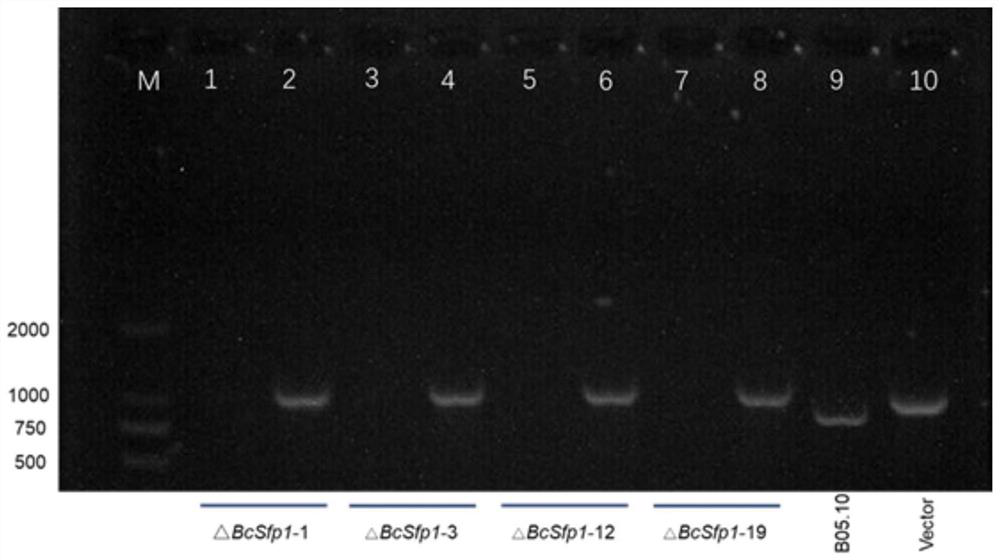Application of BcSfp1 gene in prevention and treatment of plant gray mold and improvement of disease resistance
A botrytis cinerea and gene technology, applied in the field of microbial genetic engineering, can solve problems such as unreported research, and achieve the effects of improving disease resistance and stress resistance, and enhancing pathogenicity
- Summary
- Abstract
- Description
- Claims
- Application Information
AI Technical Summary
Problems solved by technology
Method used
Image
Examples
Embodiment 1
[0051] Example 1. Correlation analysis of BcSfp1 gene
[0052] The open reading frame of BcSfp1 gene of Botrytis cinerea consists of 793 nucleotides, including 3 exons, and the total length of the coding region is 681 nucleotides. The encoded protein product consists of 226 amino acids. The BcSfp1 gene was predicted and analyzed in the Botrytis cinerea genome network http: / / fungi.ensembl.org / Botrytis_cinerea. The BcSfp1 gene number is BCIN01G01260. The NCBI protein blast results show that the amino acid sequence contains five functional domains, namely GATase1_PfpI_2 ( 6-197), GlxA (2-196), DJ-1_PfpI (64-183), ftrA (122-183) and not_thiJ (64-178), the predicted maps such as figure 1 shown.
[0053] 2. Knockout and genetic complementation of BcSfp1 gene
[0054] 1) Knockout vector construction
[0055] Primers were designed by DNAMAN and synthesized by Shanghai Sangon Biotechnology Co., Ltd.
[0056] Using primers BcSfp1-UP-F (5'-GGCGGCTCGAGACAGCGAATGGTGTGATAATCAG-3') and ...
PUM
 Login to View More
Login to View More Abstract
Description
Claims
Application Information
 Login to View More
Login to View More - Generate Ideas
- Intellectual Property
- Life Sciences
- Materials
- Tech Scout
- Unparalleled Data Quality
- Higher Quality Content
- 60% Fewer Hallucinations
Browse by: Latest US Patents, China's latest patents, Technical Efficacy Thesaurus, Application Domain, Technology Topic, Popular Technical Reports.
© 2025 PatSnap. All rights reserved.Legal|Privacy policy|Modern Slavery Act Transparency Statement|Sitemap|About US| Contact US: help@patsnap.com



